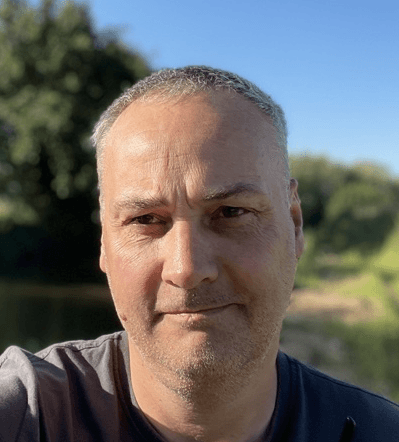
Simon Jenner
Wednesday 12 May 2021

For goodness sakes go and speak to your potential customers before you pitch for funding.
Posted in:
Startups
Our baby, Million Labs, has become a machine for meeting founders. This week I will have personally spoken with fifty. Some are new to me, some are now like old friends.
We put ourselves through this grind of meetings for the last eighteen months to better understand our customers. Myself and Simon have deliberately acted as the front men for our organisation for that very reason. We know that it will be the key to the success or failure of our adventure.
In these posts I often make reference to the fact that our founders are different and I mean it. They are both older and younger than the average. They are significantly more likely to be women, to be from less affluent areas and to be from ethnic groups under-represented in investment portfolios.
They are also building stuff that no-one could get funded before. Their businesses are niche and innovative. They target customer groups that are equally underserved by todays technology businesses.
It’s not surprising then that we can’t use traditional investment models to help them achieve their goals. The given wisdom from pre-seed and seed programmes is laughably inadequate for dealing with projects that are smaller, faster and capable of rapid iterations that were previously impossible. They are also unsuitable for founders that felt excluded by organisations run from capital cities by people that don’t look anything like them.
Know your customer. It’s a pretty simple lesson. I hope that any of our founders reading this are listening…
Pay Attention 007
Four companies pitched to me yesterday. Not one of them had validated that their customers wanted what they were selling. One lovely chap had invested $300k of his own money in building technology without once speaking to a potential client. He was asking for $1m investment. As my old business partner used to say, “we might as well set fire to the money, at least we’d be able to bake potatoes on it.”
About ten years ago I read a report that said UK lenders were failing to support small to medium sized enterprises in the North of the country. The same data was picked up in reports and publications by regulators, industry groups and newspapers. It became a “cause célèbre” and, over the next five years, I saw pitches from a number of challenger banks formed specifically to tackle that need.
The thing is money has always been available to Northern businesses. National banks don’t change their lending policies by postcode and we live in a country that takes seven hours to drive from toe to tip. The lending gap in the North isn’t caused by lack of funds, it’s caused by the different risk mix of businesses. Not one of the challenger banks I’d spoken to had done their own validation. They just relied upon the reports. For me there is no alternative to actually speaking to potential customers. Speak to people you don’t know that might actually buy your product or service. Try to sell it to them. If they say yes it’s wonderful validation and if they say no it’s an invaluable data point. It also provides us with another useful piece of information: you’re brave enough to believe in your idea and sell it. You’d be surprised how few “entrepreneurs” are.
The Main Question
So, the first and most obvious question for an investor is, “Do people value what you’re selling.” It can be evidenced by low cost of acquisition and high lifetime customer value (and therefore profitability). Yet I’d say more than 90% of pitches fail to provide any evidence in support of their answer to that question. Which is maddening because evidence is so easy to come by.
I’ll be meeting a young founder called Fatima today. She has an iPad and a dream. She’s learning to develop her own software with bubble.io so that she can launch a business. While she’s learning she’s also created a landing page on carrd.co advertising the application that she plans to launch. By the time she has built her own MVP (something that will cost her a few hundred dollars and about 100 hours) Fatima will have validated not only what it costs to drive a user to her landing page and to get them to sign up, she’ll also have spoken with a bunch of potential customers and gleaned invaluable feedback.
The banker that has invested his life savings may have an application but he’s far behind Fatima in the investment readiness stakes. I suspect that he feels, like so many people we meet feel, that customers are unlikely to buy into his business before operationally ready to trade. This is wrong thinking and in banking there’s a clear example that proves this point. Monzo launched as a landing page, just like Fatima’s. It didn’t have a product, it hadn’t settled on its go to market strategy, the branding and even company name changed later (it was Mondo). In less than ten years founder Tom has made it to the rich list and been awarded an OBE.
We believe in our own method. In April I took control back of our marketing pipeline and I’ve spent the past few weeks painstakingly iterating our onboarding process. We are trying to improve the evidence we have around cost of acquisition ahead of our own investment in scaling. I’m actually really enjoying it, just like I enjoy speaking to our customers and learning all about them. I’d encourage you to do the same in your business.
We put ourselves through this grind of meetings for the last eighteen months to better understand our customers. Myself and Simon have deliberately acted as the front men for our organisation for that very reason. We know that it will be the key to the success or failure of our adventure.
In these posts I often make reference to the fact that our founders are different and I mean it. They are both older and younger than the average. They are significantly more likely to be women, to be from less affluent areas and to be from ethnic groups under-represented in investment portfolios.
They are also building stuff that no-one could get funded before. Their businesses are niche and innovative. They target customer groups that are equally underserved by todays technology businesses.
It’s not surprising then that we can’t use traditional investment models to help them achieve their goals. The given wisdom from pre-seed and seed programmes is laughably inadequate for dealing with projects that are smaller, faster and capable of rapid iterations that were previously impossible. They are also unsuitable for founders that felt excluded by organisations run from capital cities by people that don’t look anything like them.
Know your customer. It’s a pretty simple lesson. I hope that any of our founders reading this are listening…
Pay Attention 007
Four companies pitched to me yesterday. Not one of them had validated that their customers wanted what they were selling. One lovely chap had invested $300k of his own money in building technology without once speaking to a potential client. He was asking for $1m investment. As my old business partner used to say, “we might as well set fire to the money, at least we’d be able to bake potatoes on it.”
About ten years ago I read a report that said UK lenders were failing to support small to medium sized enterprises in the North of the country. The same data was picked up in reports and publications by regulators, industry groups and newspapers. It became a “cause célèbre” and, over the next five years, I saw pitches from a number of challenger banks formed specifically to tackle that need.
The thing is money has always been available to Northern businesses. National banks don’t change their lending policies by postcode and we live in a country that takes seven hours to drive from toe to tip. The lending gap in the North isn’t caused by lack of funds, it’s caused by the different risk mix of businesses. Not one of the challenger banks I’d spoken to had done their own validation. They just relied upon the reports. For me there is no alternative to actually speaking to potential customers. Speak to people you don’t know that might actually buy your product or service. Try to sell it to them. If they say yes it’s wonderful validation and if they say no it’s an invaluable data point. It also provides us with another useful piece of information: you’re brave enough to believe in your idea and sell it. You’d be surprised how few “entrepreneurs” are.
The Main Question
So, the first and most obvious question for an investor is, “Do people value what you’re selling.” It can be evidenced by low cost of acquisition and high lifetime customer value (and therefore profitability). Yet I’d say more than 90% of pitches fail to provide any evidence in support of their answer to that question. Which is maddening because evidence is so easy to come by.
I’ll be meeting a young founder called Fatima today. She has an iPad and a dream. She’s learning to develop her own software with bubble.io so that she can launch a business. While she’s learning she’s also created a landing page on carrd.co advertising the application that she plans to launch. By the time she has built her own MVP (something that will cost her a few hundred dollars and about 100 hours) Fatima will have validated not only what it costs to drive a user to her landing page and to get them to sign up, she’ll also have spoken with a bunch of potential customers and gleaned invaluable feedback.
The banker that has invested his life savings may have an application but he’s far behind Fatima in the investment readiness stakes. I suspect that he feels, like so many people we meet feel, that customers are unlikely to buy into his business before operationally ready to trade. This is wrong thinking and in banking there’s a clear example that proves this point. Monzo launched as a landing page, just like Fatima’s. It didn’t have a product, it hadn’t settled on its go to market strategy, the branding and even company name changed later (it was Mondo). In less than ten years founder Tom has made it to the rich list and been awarded an OBE.
We believe in our own method. In April I took control back of our marketing pipeline and I’ve spent the past few weeks painstakingly iterating our onboarding process. We are trying to improve the evidence we have around cost of acquisition ahead of our own investment in scaling. I’m actually really enjoying it, just like I enjoy speaking to our customers and learning all about them. I’d encourage you to do the same in your business.
Ready to launch your startup idea with an MVP?
Download our step by step guide for non-technical founders to create a startup Minimum Viable Product (MVP)
Get the eBook

